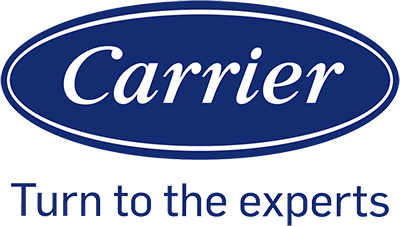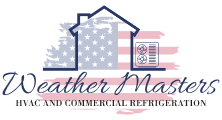When we think about indoor health, we often focus on cleaning surfaces or using air purifiers, but the air ducts in our homes and buildings play a major role too. Dust, allergens, and other particles can collect in these systems and circulate through the air we breathe every day. Clean air ducts help improve indoor air quality and support healthier living spaces.
We can understand this better by looking at how HVAC systems move air and what happens when ducts become clogged or dirty. The science shows that airflow, filtration, and ventilation all connect directly to the air we take in. This makes duct cleaning more than just a maintenance task; it’s part of protecting indoor health.
As we explore how duct cleaning affects air quality, health, and system efficiency, we’ll see why proper care and professional service matter. By breaking down the science, we can make clear choices that keep our spaces cleaner and safer.
How Air Duct Cleaning Impacts Indoor Air Quality
Air ducts can collect dust, allergens, and chemical particles that move through our living spaces. Cleaning them can reduce buildup that affects breathing, comfort, and the overall quality of the air indoors.
Sources of Airborne Contaminants in Ductwork
Air ducts pull in particles from both inside and outside the home. Dust, pet dander, pollen, and mold spores often collect in the system. Over time, these materials can settle on duct surfaces or circulate back into the air.
Moisture inside ducts can make the problem worse. Damp areas allow mold growth, which can release spores into the airflow. Even small leaks or condensation can create conditions for microbial buildup.
Chemical pollutants also enter ducts. Volatile organic compounds (VOCs) from cleaning products, paints, and furniture can attach to dust and circulate through the system. When these contaminants mix, they contribute to poor indoor air quality.
Regular use of HVAC systems keeps air moving, which means any buildup inside ducts has a direct path into the rooms we use daily. This makes the duct system a key source of airborne contaminants.
Role of Duct Cleaning in Reducing Allergens
Cleaning ducts removes dust and debris that trap allergens. When we reduce this buildup, we limit the amount of pollen, pet dander, and mold spores that re-enter the air. This can make breathing easier for people with asthma or seasonal allergies.
Vacuuming with high-efficiency equipment helps capture fine particles that normal cleaning cannot reach. Professional duct cleaning often uses brushes and negative pressure systems to dislodge and remove debris.
While duct cleaning does not eliminate allergens in the home, it reduces one of their main circulation routes. By lowering the amount of allergen material inside the ducts, we can cut down on repeated exposure.
This step works best when combined with other practices such as using air filters, controlling humidity, and cleaning surfaces. Together, these actions improve indoor air quality and reduce allergen levels.
Connection Between Air Ducts and Indoor Air Pollution
Air ducts act as pathways for both fresh and polluted air. If they contain dust, mold, or chemical residues, the HVAC system spreads these pollutants throughout the home. This can contribute to poor indoor air quality and discomfort.
Indoor air pollution often comes from everyday activities. Cooking, smoking, and using household products release particles and gases. Once inside the ducts, these pollutants can linger and recirculate.
Blocked or dirty ducts may also reduce airflow, which makes the HVAC system work harder. Poor airflow can trap pollutants indoors and lead to uneven air distribution.
By keeping ducts clean, we reduce the spread of airborne contaminants and improve ventilation. This helps maintain healthier indoor spaces and lowers the risk of long-term buildup of indoor air pollution.
The Science of HVAC Systems and Ventilation
We rely on HVAC systems to manage indoor air quality, temperature, and airflow. Clean air movement, proper ventilation, and effective filtration all play a role in reducing pollutants and supporting healthier indoor spaces.
HVAC System Functions and Air Circulation
An HVAC system controls heating, ventilation, and air conditioning in a building. It moves air through ducts, distributes it to rooms, and then pulls it back through return vents for reconditioning. This cycle repeats to maintain stable indoor conditions.
When the system runs efficiently, it balances temperature and humidity while keeping air moving. Poorly maintained systems may trap dust or moisture, which can reduce performance and allow contaminants to spread.
Key functions include:
- Heating: warms air during colder seasons.
- Cooling: lowers indoor temperature through air conditioning.
- Air circulation: pushes and pulls air for consistent distribution.
Balanced circulation ensures that fresh air mixes with conditioned air. Without it, some rooms may feel stuffy while others feel drafty. Consistent airflow also helps reduce buildup of allergens and particles inside ducts.
Importance of Proper Ventilation
Ventilation exchanges indoor and outdoor air. It removes stale air, odors, and excess moisture while bringing in fresh air. Without proper ventilation, pollutants such as carbon dioxide, volatile organic compounds, and dust can accumulate indoors.
We can improve ventilation through natural means, like opening windows, or mechanical systems built into HVAC units. Mechanical ventilation is more reliable because it works regardless of weather or outdoor conditions.
Proper ventilation supports:
- Moisture control to prevent mold growth.
- Pollutant dilution by reducing indoor concentrations.
- Fresh air supply for comfort and health.
If a building lacks adequate ventilation, indoor air may feel heavy or cause discomfort. Over time, poor airflow can also strain heating and cooling systems, making them work harder and use more energy.
Impact of Air Filters and Clean Air Delivery Rate
Air filters capture particles such as dust, pollen, and pet dander as air passes through the HVAC system. The efficiency of a filter depends on its design and rating. Higher-rated filters can trap smaller particles but may also restrict airflow if not matched to the system.
The Clean Air Delivery Rate (CADR) measures how quickly a filter or device removes particles from the air. A higher CADR means faster and more effective cleaning. When we choose filters, both CADR and system compatibility matter.
Types of filters include:
- Fiberglass filters: low cost, minimal particle capture.
- Pleated filters: better surface area and efficiency.
- HEPA filters: capture very small particles, often used in specialized systems.
Regular filter replacement keeps airflow steady and prevents dust from recirculating. Ignoring filter maintenance can lower indoor air quality and reduce the lifespan of the HVAC system.
Health and Safety Considerations in Air Duct Cleaning
Air duct cleaning affects more than just airflow. It plays a role in limiting exposure to airborne contaminants, reducing risks tied to harmful gases, and controlling mold growth that can spread through indoor spaces.
Effects of Airborne Pollutants on Health
When ducts collect dust, pollen, and pet dander, these particles can circulate through the air we breathe. This can trigger allergies, asthma, and other respiratory issues. People with preexisting conditions often notice stronger effects when exposed to these airborne contaminants.
Indoor air pollution may also include fine particles from cleaning supplies, cooking, or outdoor air that enters the system. Once inside, ducts can distribute them throughout the home or workplace. This makes regular cleaning important for reducing buildup.
Common pollutants found in ducts include:
- Dust and dirt
- Pollen
- Pet hair and dander
- Cleaning chemical residue
- Smoke particles
By removing these materials, we lower the concentration of allergens and irritants in indoor air. This can ease symptoms for sensitive groups and improve comfort for everyone in the space.
Risks of Carbon Monoxide and Other Gases
Carbon monoxide (CO) is a colorless, odorless gas that can leak into ducts if heating systems or fuel-burning appliances malfunction. Even at low levels, CO exposure can cause headaches, dizziness, and fatigue. At higher levels, it becomes life-threatening.
Air ducts can also spread other gases, such as nitrogen dioxide from stoves or volatile organic compounds (VOCs) from building materials. These gases contribute to indoor air pollution and may worsen health problems over time.
We reduce risks by ensuring that appliances vent properly and that ducts remain free of blockages. Installing carbon monoxide detectors in living areas adds another layer of safety. Regular inspections by qualified technicians help us identify leaks or faulty equipment before they pose serious health hazards.
Reducing Exposure to Mold and Pathogens
Moisture inside ducts creates conditions where mold and bacteria can grow. When air moves through the system, spores and microbes can spread into occupied rooms. This may cause coughing, throat irritation, or more serious infections in people with weak immune systems.
Signs of mold include visible growth near vents, musty odors, or increased allergy-like symptoms indoors. Once mold is present, cleaning alone may not be enough. We often need to address the source of moisture, such as leaks or poor ventilation.
Steps to reduce mold and pathogen risks:
- Keep humidity levels below 50%.
- Repair water leaks quickly.
- Use high-efficiency air filters.
- Schedule professional cleaning if contamination is found.
By controlling moisture and cleaning ducts when needed, we reduce the spread of mold and pathogens. This helps maintain safer indoor air and prevents recurring contamination.
Efficiency, Maintenance, and Professional Services
Clean air ducts help us manage energy use, keep maintenance costs predictable, and decide when professional help is needed. Regular care also extends the life of our HVAC system and keeps airflow steady.
Energy Efficiency and Cost Savings
When our air ducts stay clean, our HVAC system does not need to work as hard to move air. This reduces strain on the blower motor, which lowers energy use. Over time, this can cut monthly utility bills.
Dust and debris buildup narrows airflow, forcing the system to run longer cycles. Even small blockages can increase electricity or fuel use. By keeping air ducts clear, we maintain steady airflow and reduce wasted energy.
We also lower maintenance costs when the system runs efficiently. Components like filters, coils, and fans experience less wear. This means fewer repairs and a longer lifespan for the unit.
A simple way to view this is:
| Condition of Air Ducts | Impact on Energy Use | Impact on Costs |
|---|---|---|
| Clean and clear | Lower energy use | Lower bills |
| Dust and debris buildup | Higher energy use | Higher bills |
When to Seek Professional Air Duct Cleaning Service
We do not always need a professional service, but some signs make it necessary. If we see visible mold inside ducts, smell musty odors, or notice heavy dust blowing from vents, it is time to call a specialist.
Professional air duct cleaning service uses tools like high-powered vacuums and rotary brushes. These remove buildup that normal cleaning cannot reach. This is especially important if pests or rodents have entered the ducts.
We should also consider professional help after major renovations. Construction dust often spreads through the system and clogs filters quickly. Another sign is uneven airflow or rooms that do not heat or cool properly.
Hiring a trained technician ensures the job is done without damaging the ducts. It also helps verify if the system has leaks or insulation issues that affect efficiency.
Maintenance Tips for Optimal System Performance
Regular maintenance prevents problems before they grow. We should replace or clean HVAC filters every 1–3 months, depending on use and air quality. This keeps dust from entering ducts and reduces stress on the system.
Inspecting vents and registers for blockages is another easy step. Furniture, rugs, or dust buildup can restrict airflow. Keeping these areas clear helps the system distribute air evenly.
We should also schedule yearly HVAC inspections. Technicians check for leaks, worn parts, and other issues that affect performance. This small step can prevent costly breakdowns.
Simple habits like keeping floors vacuumed and controlling indoor humidity also reduce debris and mold growth in ducts. By combining these steps, we keep our air ducts and HVAC system working efficiently with fewer interruptions.




